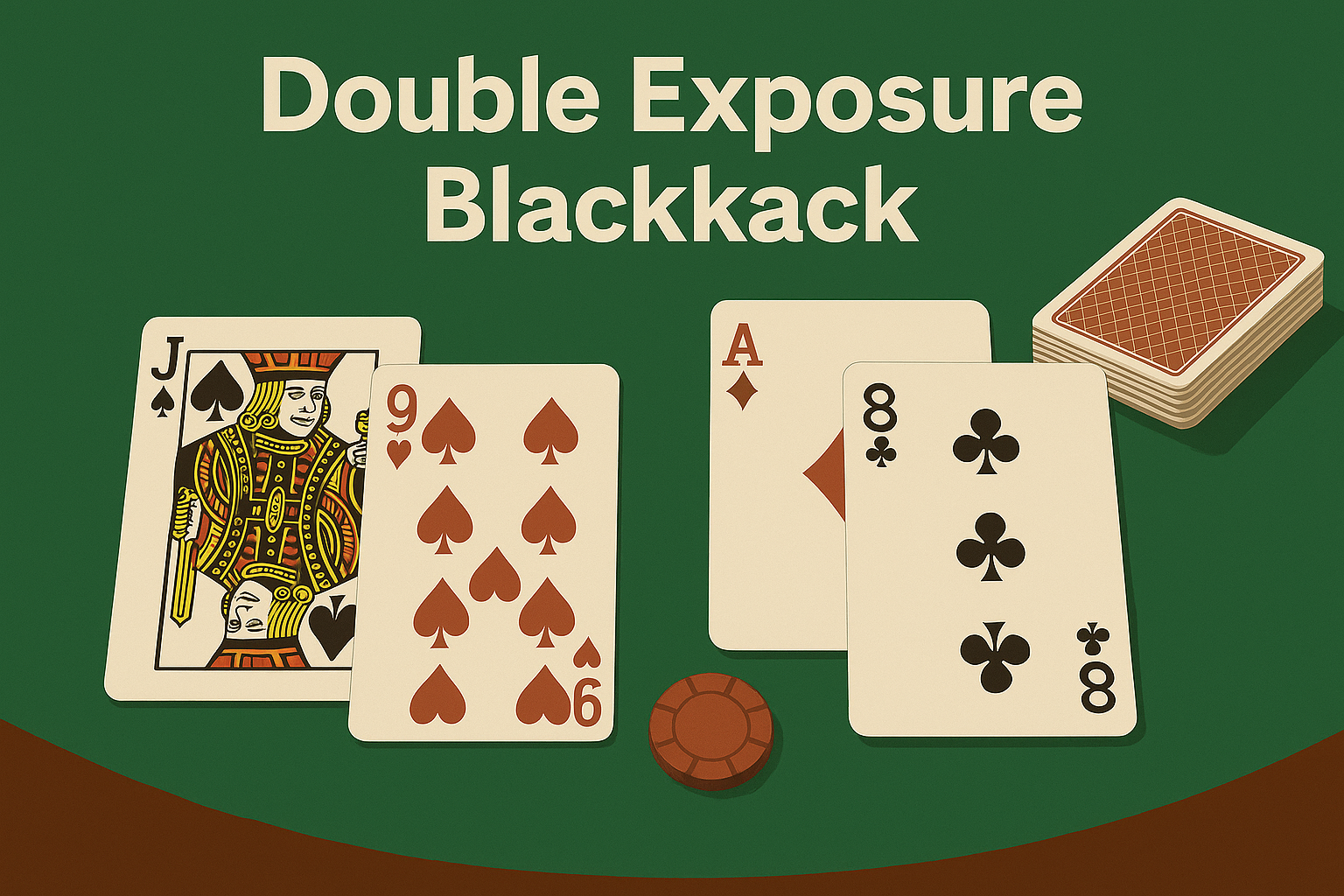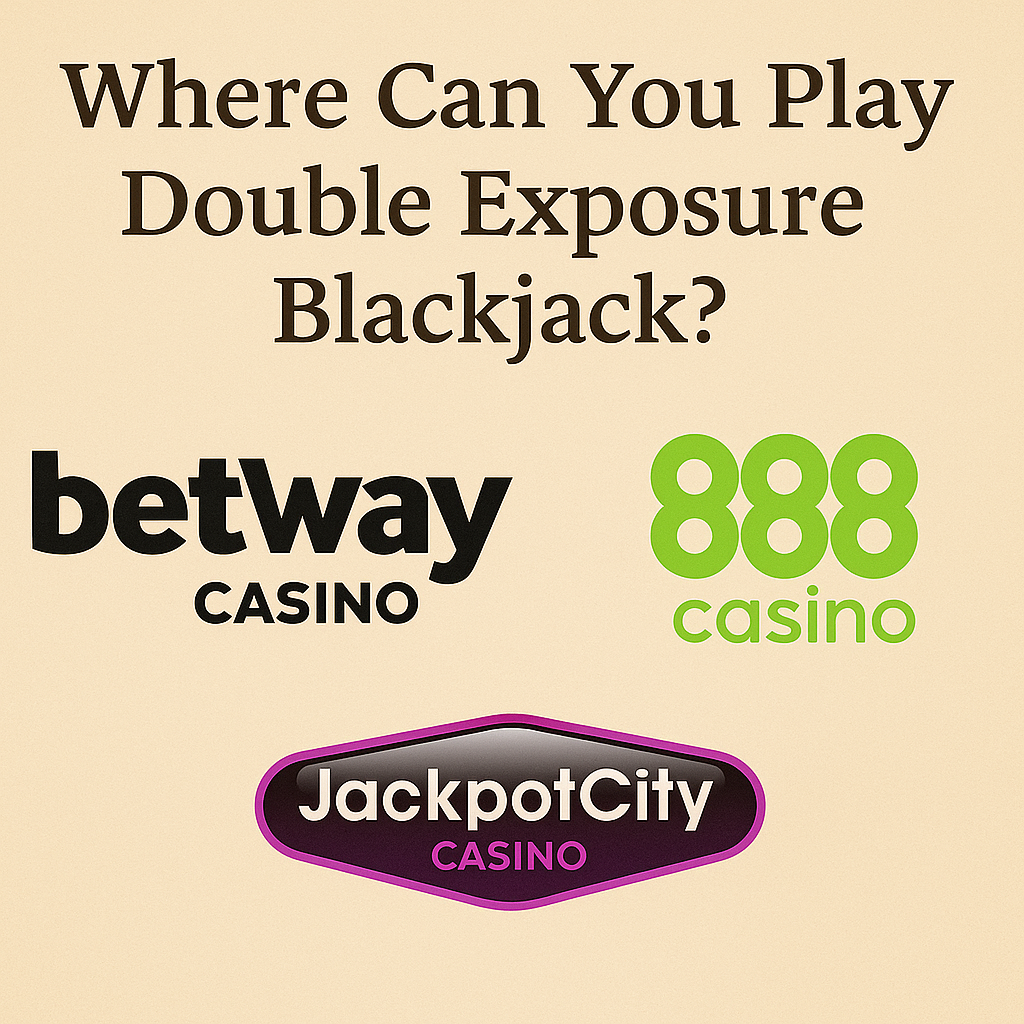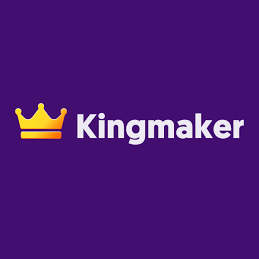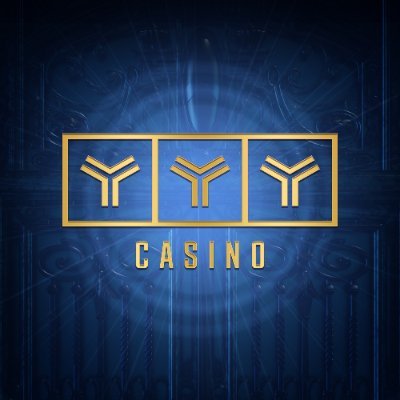Unlike traditional blackjack, both dealer cards are exposed right from the start, giving players a unique advantage—but with a twist. The concept was so different from classic blackjack that I couldn’t resist trying it. I will walk you through everything you need to know with this double-exposure blackjack guide, covering strategies, rules, and tips to maximize your chances of winning.
Double Exposure Blackjack Strategy – Best Tips for UAE Players
What is Double Exposure Blackjack?

Double exposure blackjack is a unique variant of blackjack in which the dealer’s two cards are dealt face-up, providing complete visibility to the player. I remember the first time I played—I was stunned to see both dealer cards exposed. It felt like having insider information, like peeking at the answers during a test.
Of course, the casino isn’t giving this advantage away for free. The game adjusts with strict rules: ties go to the dealer, and blackjacks only pay even money. My first session taught me that these tweaks make a real difference. I lost a few hands simply because I underestimated the impact of those tie rules.
If you love strategic play and want to master how to play effectively, double-exposure blackjack is the perfect choice. That extra information transforms decision-making. Over time, I learned that the big question many ask is: can double exposure blackjack be beaten? The answer is yes, if you know the right strategy, think ahead, and manage your bankroll wisely.
Double Exposure Blackjack Rules and House Edge
The rules of double exposure blackjack are carefully designed to balance out the player’s advantage of seeing both of the dealer’s cards. While it may seem like you have a clear edge initially, the casino has adjusted certain aspects of the game to maintain its advantage. Here’s a breakdown of the main rules:
Both Dealer Cards Are Exposed
The standout feature of blackjack double exposure is that both of the dealer’s cards are face-up right from the start. This gives you complete visibility of the dealer’s hand, allowing you to make more informed decisions. In classic blackjack, you’re guessing based on one card; the guesswork is gone here.
Dealer Wins All Ties (Except Blackjack)
One of the key adjustments in double exposure blackjack is that ties, except for natural blackjacks, go to the dealer. If you and the dealer have the exact total, the dealer wins automatically. The only exception is a natural blackjack (an Ace and a 10-value card), which results in a push. This rule is crucial because, in standard blackjack, ties are considered a push, meaning you don’t lose your bet. Here, that extra edge goes straight to the house.
Blackjack Pays Even Money
In traditional blackjack, hitting a 21 on your initial hand pays 3:2. But in double exposure blackjack, the payout is only 1:1. I remember the first time I hit a blackjack and expected the usual higher payout—only to find I just doubled my bet instead of getting the regular bonus. This is one way the casino balances the advantage of seeing both cards.
Dealer Hits on Soft 17
Another critical difference is that the dealer must hit on a soft 17. In many classic blackjack games, the dealer stands on soft 17, but not here. A smooth 17 (Ace + 6) can easily improve, giving the dealer a better chance to win. This subtle rule adjustment provides the house with a slight boost.
Eight Decks Are Commonly Used
Most double-exposure blackjack games are played with an eight-deck dealer, adding more unpredictability. This adds more variation and makes it harder to predict the outcomes. You might find six-deck variations in some casinos, but eight is the standard. More decks mean less predictability, which slightly favors the house.
House Edge in Double Exposure Blackjack
Understanding the odds and the house edge in double-exposure blackjack is crucial for strategic play. On average, it ranges from 0.67% to 1.5%, depending on the specific game settings and house rules. While this may seem small, it’s enough to affect long-term play.
However, with a solid strategy, you can minimize this edge and increase your chances of winning. Knowing when to stand, hit, or double down based on the dealer’s exposed cards is crucial for mastering this game.
Double Exposure Blackjack vs Classic Blackjack
I’ve played both versions extensively, and the differences are massive. At first, double exposure blackjack seems like a huge advantage—you get to see both dealer cards right from the start. But the rules balance it out.
Key Differences
| Feature | Double Exposure Blackjack | Classic Blackjack |
|---|---|---|
| Dealer’s Cards | Both face-up | One face-up, one face-down |
| Ties | Dealer wins all ties (except blackjack) | Push |
| Payout for Blackjack | 1:1 | 3:2 |
| House Edge | Higher due to exposed cards | Lower with basic strategy |
| Dealer’s Action | Hits on soft 17 | Stands on soft 17 |
| Decks Used | Typically 8 decks | Usually 6 or 8 decks |
My Experience
When I first played double-exposure blackjack, I thought I was unbeatable. Seeing both dealer cards felt like a cheat code. But I quickly learned that ties to the dealer and the 1:1 blackjack payout add up. In a classic blackjack, those same hands would have either pushed or paid out more.
Double exposure is like playing with X-ray vision—you see everything but still need a solid strategy to win.
Double Exposure Blackjack’s Basic Strategy
I remember studying a double-exposure blackjack chart to fine-tune my game. Having a chart handy makes it easier to make quick decisions during play. The first few sessions were brutal—I had the information but wasn’t using it correctly. Over time, I learned that double exposure blackjack is about calculated risks. Here are some important tips I’ve picked up to improve your gameplay:
📌 Always Stand If:
- Your value hand is 17 or higher, and the dealer shows anything lower.
- You have a hard 12 to 16, and the dealer shows a 4, 5, or 6. In this case, the dealer is statistically more likely to bust, so standing is the right move.
I remember one hand where I stood on 16 against a dealer’s 5, and the dealer busted. That was the first time I saw the strategy pay off.
📌 Hit If:
- The dealer shows 7 or higher, and you have less than 17. With both cards visible, it’s easy to see when the dealer is in a strong position.
- You hold 12 to 16, and the dealer has a 7 or 8. In most cases, you must be more aggressive in these spots to stay in the game.
One time, I hesitated with a 14 against a dealer’s 7. I hit, pulled a 6, and reached 20. That was the moment I stopped second-guessing this strategy.
📌 Double Down If:
- You have 9, 10, or 11, and the dealer shows a weaker hand. This is where you maximize your edge.
- If you have 11 against a dealer’s 5 or 6, it’s practically a green light to double down.
I always get a rush doubling down on 11 against a weak dealer hand. It’s one of the few times in double exposure where you feel the advantage shift to you.
📌 Split If:
- Always split Aces or 8s. This is a universal rule in all blackjack variants and essential in double-exposure blackjack.
- Avoid splitting 10s or face cards. In this version, ties go to the dealer, so two strong cards are better kept together.
I made the mistake of splitting 10s in my first few games and quickly realized it was a terrible move in double exposure. Keeping that 20 intact is far more valuable.
My Secret Weapon: The Cheat Sheet
I always keep a cheat sheet for double-exposure blackjack nearby, especially when playing online. It’s a quick reminder of optimal plays and saves me from impulsive decisions. If I try a new casino or a different platform, I’ll double-check the rules and adjust my strategy accordingly.
Where to Play Double Exposure Blackjack?

I always get the question: Where do I play double exposure blackjack? Many reputable online casinos feature this exciting variant; for players in the UAE and across the Middle East, Arabic casinos also offer this game, often alongside popular slot games. The growing demand in the region means that dedicated saudi arabia online casinos are also adding unique variants like this to their game libraries, including live dealer options that bring the real casino feel straight to your screen.
Best Online Casinos for Double Exposure Blackjack:
- Betway Casino – Smooth gameplay with clear rules and demo versions.
- 888 Casino – Great for live dealer games and reliable payouts.
- JackpotCity Casino – Excellent graphics and user-friendly interface.
Why Try Demo Versions First?
I always recommend testing the demo versions before betting real money. It’s the best way to familiarize yourself with the rules without risking your bankroll.
What to Look For:
- Licensed and Regulated for security.
- Clear Game Rules for Transparency.
- Mobile Compatibility for on-the-go play.
Conclusion
To sum it up, double-exposure blackjack is a thrilling twist on the classic game. Yes, the house edge is slightly higher, but the ability to see both of the dealer’s cards makes it incredibly strategic. If you ask me, it’s worth learning the double exposure blackjack strategy to maximize your edge and increase your chances of winning.
I’ve won some big hands and lost a few, but the thrill never dies. People often ask, can you win consistently at double exposure blackjack? With the right strategy, it’s possible. If you want to take your blackjack skills to the next level, experience the difference.
FAQs
Absolutely! Many trusted online casinos offer double exposure blackjack with live dealer options for a more immersive experience. Some of the best platforms include 888 Casino and Betway Casino, where you can practice in demo mode before wagering real money.
Since you see both of the dealer’s cards, it can be, which removes much of the guesswork. However, the rule changes—like ties going to the dealer and even money payouts for blackjacks—add complexity. Beginners can learn faster but must understand these adjustments to avoid costly mistakes.
Not entirely. The strategy needs to be adjusted because of the exposed dealer cards and different tie rules. For example, you may stand more often and avoid inevitable splits that would be profitable in classic blackjack. It’s all about maximizing your information while accounting for those unique rules.
This balances out the advantage of seeing both dealer cards. In regular blackjack, the hidden dealer card introduces risk, which is compensated with a 3:2 payout. In double exposure blackjack, the transparency means you get less for hitting 21, but you can plan your moves more strategically.





